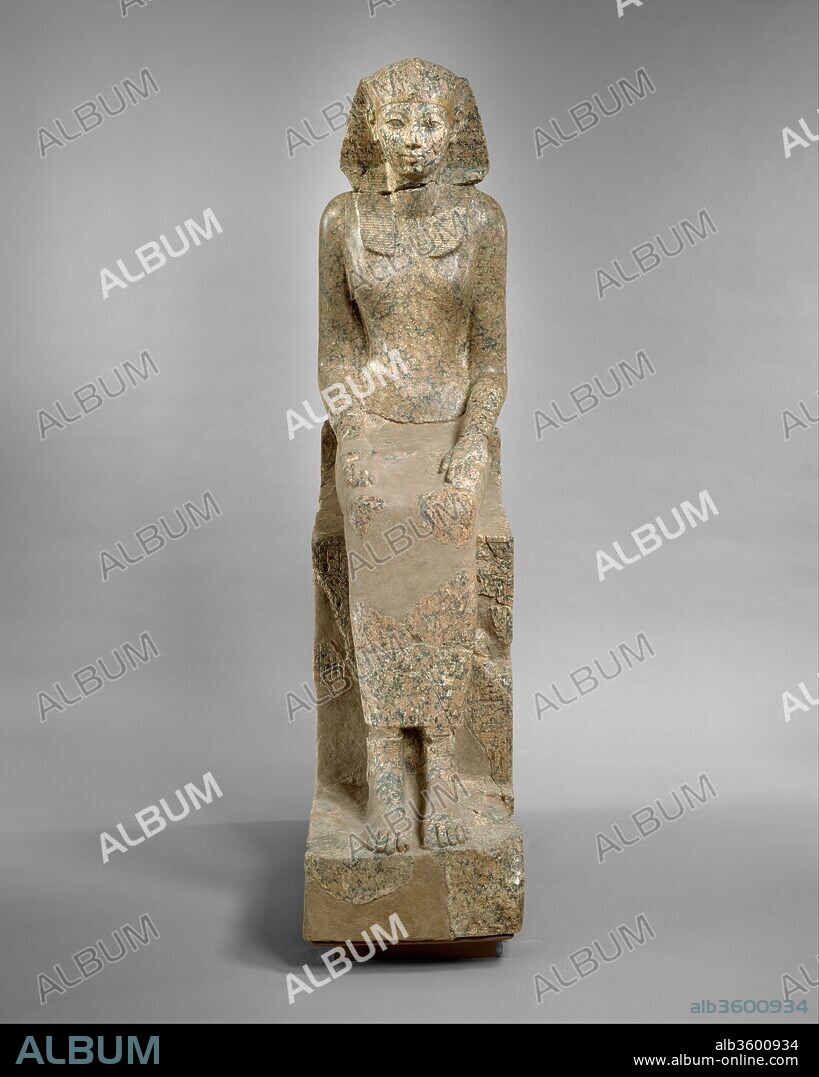alb3600934
The Female Pharaoh Hatshepsut

|
Add to another lightbox |
|
Add to another lightbox |



Title:
The Female Pharaoh Hatshepsut
Caption:
The Female Pharaoh Hatshepsut. Dimensions: H. 170 × W. 41 × D. 90 cm, 620.5 kg (66 15/16 × 16 1/8 × 35 7/16 in., 1368 lb.) (as reassembled). Dynasty: Dynasty 18. Reign: Joint reign of Hatshepsut and Thutmose III. Date: ca. 1479-1458 B.C..
This graceful, life-size statue depicts Hatshepsut in female attire, but she wears the nemes headcloth, a royal attribute usually reserved for the reigning king. In the columns of text inscribed beside her legs on the front of the throne, she has already adopted the throne name Maatkare, but her titles and epithets are still feminine. Thus, she is "Lady of the Two Lands" and "Bodily Daughter of Re." On the back of the throne, part of an enigmatic scene is preserved which probably consisted of two back-to-back goddesses. The goddess has the body of a pregnant hippopotamus with feline legs and a crocodile tail appears behind her legs. Although this resembles Taweret, the goddess who protects women and children, it is probably Ipi, a royal protector who appears in the same position on a statue of the Seventeenth Dynasty king Sebekemsaf I (ca. 1575 B.C.) in the British Museum.
In the early 1920s the Museum's Egyptian Expedition excavated numerous fragments of the statue near Hatshepsut's temple at Deir el-Bahri in western Thebes. The torso, however, had been found in 1869 and was in the Rijksmuseum van Oudheden in Leiden. In 1998, the Leiden torso and the Met's portions of the statue were reunited for the first time since the original was destroyed in about 1460 B.C. The statue now travels between the two Museums and is currently on view in Leiden until 2016.
Technique/material:
granite
Period:
NEW KINGDOM
Museum:
Metropolitan Museum of Art, New York, USA
Credit:
Album / Metropolitan Museum of Art, NY
Releases:
Model: No - Property: No
Rights questions?
Rights questions?
Image size:
3276 x 4094 px | 38.4 MB
Print size:
27.7 x 34.7 cm | 10.9 x 13.6 in (300 dpi)
 Pinterest
Pinterest Twitter
Twitter Facebook
Facebook Copy link
Copy link Email
Email

